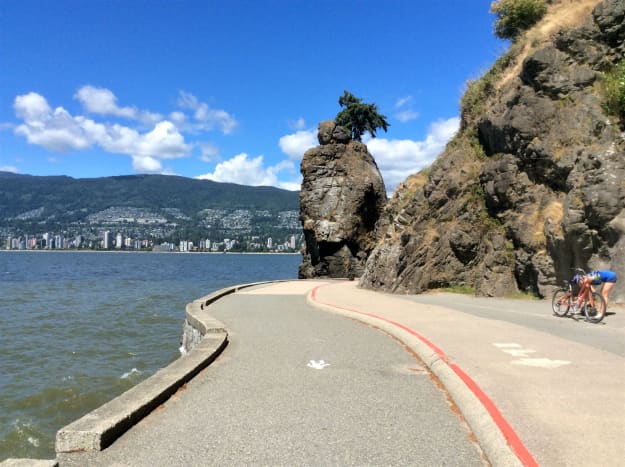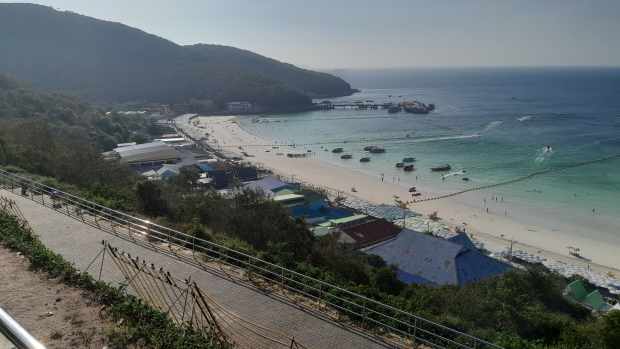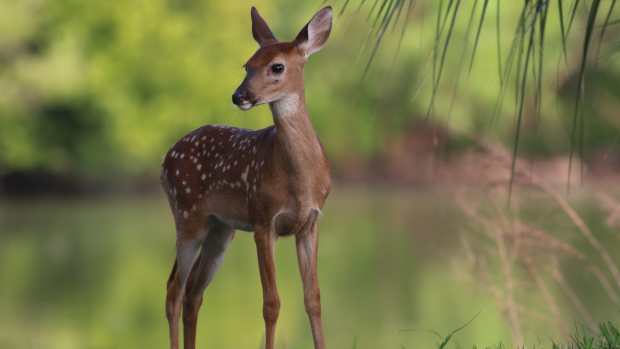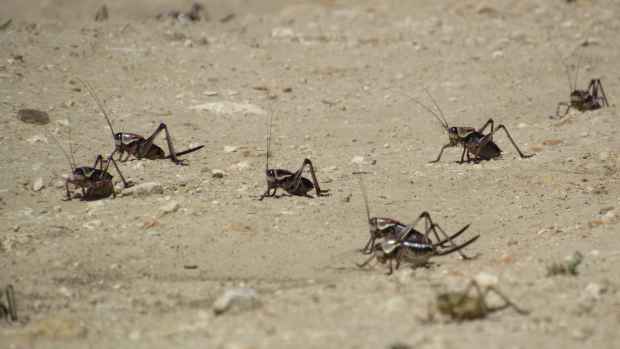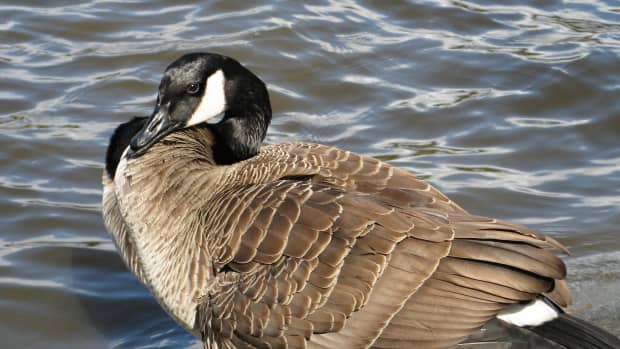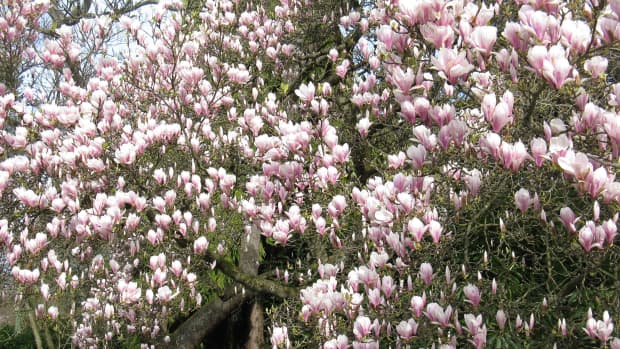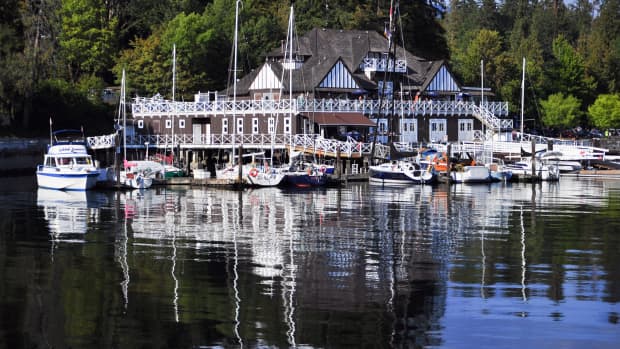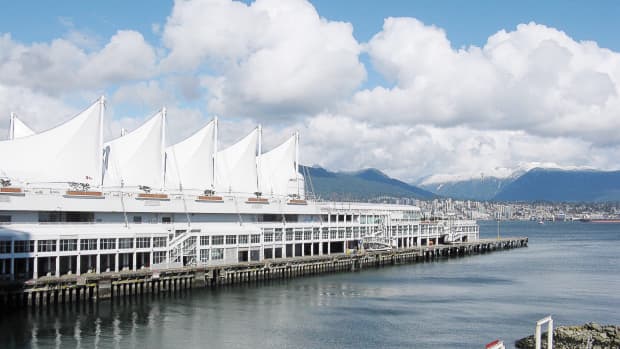Exploring Nature in Stanley Park: Land, Lakes, and Seashore
Animals and Plants in Stanley Park
Stanley Park is located in Vancouver, British Columbia. It's one of Canada’s most famous city parks and is a wonderful place to observe nature at any time of year.
The park is located on a peninsula projecting into Burrard Inlet and occupies an area of 405 hectares (1000 acres). It contains a variety of habitats for walkers to explore: carefully tended grass with cultivated flowers, shrubs, and trees, a seawall path that offers great views and access to both rocky and sandy beaches, and trails around small lakes and through forests filled with hemlock, cedar, and fir trees. Many different animals can be found in each of the habitats.
Stanley Park is beautiful in winter as well as summer. The mild weather in Vancouver means that some animals are active all year. Evergreen plants are beautiful at any time. Buds and catkins open early in the year when many other places in Canada have snow. The Vancouver Aquarium is located in Stanley Park and is open throughout the year. The park also contains some interesting landscape features that can be appreciated in any season.
An Overview of the Park
Stanley Park was opened on September 27th, 1888. It was named in honour of Lord Stanley, who was the Governor General of Canada at the time. The park is easily reached from downtown Vancouver by walking, cycling, or driving. Buses also travel to the park. A link to a trip planner for people travelling by public transit is provided in the "Reference and Resources" section below.
The Stanley Park peninsula has Burrard Inlet on its northern and eastern sides and English Bay on its western side. The different landscapes in the area are interesting to examine. The park offers playgrounds, picnic areas, miniature train rides, rides in horse-drawn carriages, a water park, and an outdoor swimming pool. It also contains interesting landmarks such as totem poles, Siwash Rock (a 32 million-year-old sea stack), a large western red cedar tree with a hollow trunk, and many monuments and sculptures.
One of Stanley Park's most important functions is to act as a nature preservation area. The park is large enough to contain areas for both nature study and recreation. It's known for its natural habitats containing wild plants and animals as well as its cultivated areas and the Vancouver Aquarium. The aquarium contains other types of animals besides fish. Organisms that are technically not plants can also be seen in the park, including seaweeds and fungi.








Stanley Park is a wonderful place to take photos and contains diverse sights. I always have a camera with me when I visit the park. Unless otherwise stated, all of the photographs in this article were taken by me. We owe our ability to explore the park to the native people of British Columbia, as the quotation below states.
Travelling Through Stanley Park
The Stanley Park seawall travels around the perimeter of Stanley Park. The path on the seawall is 8.8 km (5.5) miles in length and is a very popular walking, cycling, and inline skating route. It travels by both rocky and sandy beaches. The sandy beaches are nicer for sunbathing, but the rocky beaches have the most wildlife. Benches are in place periodically so that a person can rest. It’s possible to cut through the city to return to the starting point once Stanley Park is left instead of turning around and reversing the direction of travel.
The path continues from the seawall at either end for people who would like a longer walk. The entire route is known as the Seaside Greenway. It starts at the Vancouver Convention Centre and will end at Spanish Banks Park. The last two kilometres of the greenway need to be completed. The entire route will be 28 km when this is done. The path contains both walking and cycling lanes. Bike rental stores exist near the route.
The seawall path is very popular. I often walk along it on my own, especially on a weekend when it’s busiest. The paths through the cultivated areas of the park are also popular and are seemingly safe for a solo traveller. I should add that though I visit the park often, I haven’t visited every corner of the cultivated area. The trails through the forested centre of Stanley Park take a person into more secluded areas. They are certainly worth exploring, but it might be better to have a companion for this exploration.
Stanley Park is on the unceded territories of the Musqueam, Squamish and Tsleil-Waututh peoples... Unceded means that First Nations people did not give up land or legally sign it away to Britain or Canada…treaties were signed with First Nations that gave incoming settlers rights to much of the land.
— City of Vancouver’s Stanley Park website
Seashore Life: Green and Purple Shore Crabs
If you walk on a rocky beach in the park and lift up a rock in the intertidal zone, you will probably discover little shore crabs. They quickly scuttle away to hide when they're disturbed. I've never been able to photograph a living one. The crabs are just a few centimetres wide—a 5 cm specimen is a giant—and are green, yellow, grey, red, brown, or purple in colour. They belong to the genus Hemigrapsus. The green (or similarly coloured) shore crab is Hemigrapsus oregonensis. The purple shore crab is Hemigrapsus nudus.
Shore crabs feed mainly on diatoms (unicellular algae encased within a silica shell), sea lettuce (a type of green seaweed), and other green algae. They may also scavenge animal remains and eat animal eggs.
Recommended
Rockweed
Rockweed is a very common brown seaweed (or brown alga) that coats the rocks on the seashore. Although algae are not plants, they do have some plant-like features. The blades of rockweed have inflated bulbs at their tips. The bulbs contain gas, which enable the blades to float or stand erect when the tide comes in. This orientation exposes the blades to more sunlight than they would receive if they were flattened under the water. This is important for the seaweed because it makes its food by photosynthesis, which requires light energy.
Rockweed bulbs have bumps on their surfaces at certain times of year, as in my photo above. The bumps contain reproductive structures, which release the male and female cells into the water. After the cells join, the fertilized egg forms an embryo that attaches to a rock and grows into a new seaweed.
Acorn Barnacles
Another common sight on the rocky beaches of the park is the acorn barnacles. Barnacles have plates at the top of their shells that open when the animals are immersed in water. The plates act like trap doors, allowing feathery appendages to emerge. The appendages rhythmically sweep tiny creatures into the animal for it to eat. If you look for barnacles that are covered by shallow water, you should be able to see this feeding action.
Acorn barnacles are firmly attached to their substrate. When the tide is out, their shells are tightly closed to prevent the animals from drying out. The barnacles are numerous in the intertidal zone. Although it's difficult to do, I try to avoid standing on the animals as I climb over rocks.
Blue Mussels
Blue mussels (Mytilus trossulus) are a common sight on British Columbia shores. They are found from the coast of Northern Mexico to Alaska. Their shells are blue-black in colour. The thin, outer, and brown layer known as the periostracum may be seen on some animals, however.
The mussels are attached to their substrate by strong byssal threads. The animals are filter feeders. Their main food is phytoplankton, which are tiny plant-like organisms found in seawater. The water enters the mussel through the incurrent siphon, flows over the gills, where the plankton is trapped, and then flows out through the excurrent siphon.
Other Intertidal Animals and Seaweeds
Three common birds seen on the beaches of Stanley Park are the glaucous-winged gull (Larus glaucescens), the northwestern crow (Corvus caurinus), and the great blue heron (Ardea herodias). The crow is sometimes said to be the same species as the American crow (Corvus brachyrhynchos). Since 2001, great blue herons have nested in trees outside the Vancouver Park Board's office at the edge of Stanley Park. The birds are often seen fishing in the park.
You may also discover other creatures on the Stanley Park shore, including limpets, clams, periwinkles, ribbon worms, sea stars (starfish), sea cucumbers, and green and red seaweeds. Their visibility depends on the habitat and on how low the tide is. In the subtidal zone, the floats of bull kelp can be seen bobbing on the water surface. From the beach, you may see swimming or diving cormorants and ducks.
If you’re interested in seashore life, it’s important to look at a tide table for the day of your visit to see when low tide is occurring and how low it’s going to be. The lower the tide, the greater the variety of seashore animals and seaweeds that will be visible.
Beaver Lake
In addition to the cultivated area of the park, the seawall, and the beaches, Stanley Park has several other attractions for nature enthusiasts. Most of the park is covered by forest. Squirrels, raccoons, skunks, and coyotes may be seen from the forest trails or, in the case of skunks, smelled. The squirrels and raccoons are confident animals and are also found in the cultivated sections of the park.
Beaver Lake is a natural body of water located near the centre of the park amidst the trees. A trail travels around the lake. Waterfowl are often present on the water, frogs sometimes visit, and bald eagles sometimes patrol the sky above. Barred owls, little brown bats, and northern flying squirrels visit the lake area at night. In addition, beavers can sometimes be seen in or around the lake, as the name of the lake suggests.
A creek flows from the lake to the ocean. According to the park’s lake document referenced below, coastal cutthroat trout and coho salmon live in the creek all year. The three-spine stickleback is the dominant fish within the lake.
Beaver Lake is gradually being filled with soil, plant debris, and water lilies in a natural process. It's estimated that if this process continues the water will have gone within about twenty years. The Vancouver Park Board Is planning a restoration project for the lake, however.
Lost Lagoon
Lost Lagoon is located near the main Stanley Park entrance, on the left side of the road if you are approaching the park from downtown Vancouver. It contains fresh water today but was once fed by ocean water travelling with the tide from Coal Harbour. The lagoon is now separated from the harbour by the causeway that passes through Stanley Park.
Lost Lagoon is a bird sanctuary. It contains waterfowl and until quite recently contained mute swans (Cygnus olor) as well. The swans have been moved to a sanctuary. Many other types of birds visit the trees and shrubs that border the lagoon and the trail that travels around the lagoon. The Lost Lagoon Nature House has nature displays and information to educate and entertain visitors. The nature house is run by the Stanley Park Ecology Society and is located in the former boathouse at the southeast corner of Lost Lagoon.
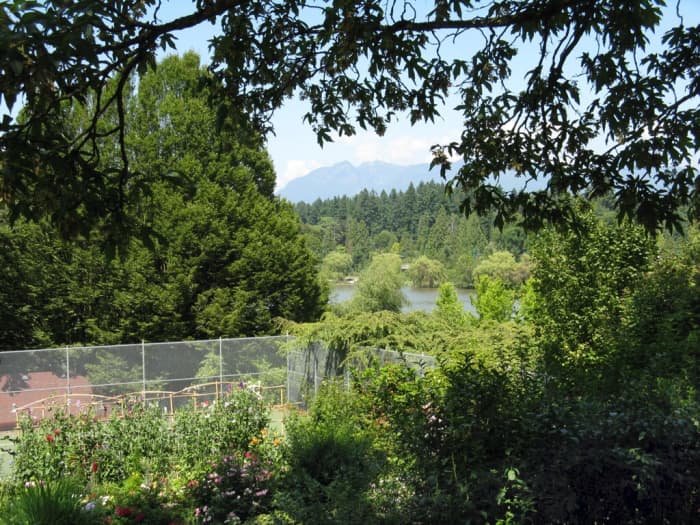
This is a view of Lost Lagoon from the tennis courts, with the North Shore Mountains in the background.











The Rose Garden
The Stanley Park Rose Garden contains around 3,500 rose plants as well as many other attractive ornamental plants. The garden is located next to the Stanley Park Pavilion, a historic building erected in 1911 that is now a restaurant.
Stanley Park also contains a rhododendron garden as well as flower beds distributed throughout the cultivated part of the park. The plants are attractive to look at all year, but a late spring, summer, or early fall visit is needed in order to see most of the flowers in bloom.
The Shakespeare Garden is located next to the rose garden. It's an arboretum containing trees mentioned in the works of William Shakespeare. Plaques with the relevant quotes are placed on the appropriate tree trunks. Besides being attractive, the arboretum is a nice place to cool down on a hot day.
The Stanley Park Rose Garden, first established in 1920 by the Kiwanis Club, boasts over 3,500 rose bushes.
— City of Vancouver’s Stanley Park website
The Vancouver Aquarium
The Vancouver Aquarium has a large collection of tropical and temperate fish and invertebrates, including sharks, as well as amphibians, reptiles, birds, and mammals. The mammals include sea otters and sea lions. The aquarium once displayed cetaceans (whales, dolphins, and porpoises) but has decided to no longer do so.
The stated goals of the aquarium are animal conservation, public education, and research. It holds daily feeding shows in which information about the animals is shared. Over the years, the shows have gradually changed from showing animal tricks to demonstrating more natural behaviours and educating the viewers as they watch the demonstration. The aquarium offers a wide range of school programs. It also cares for rescued marine animals until they can be released back into the wild.
The Vancouver Aquarium has a gift shop, which people can enter without paying for an aquarium visit. It also has a café and a snack bar to serve people who are hungry during their visit. The café has a section that can be accessed from outside the aquarium. The aquarium's food is expensive (or at least it was during my last visit), so it might be better to eat elsewhere. In summer, the Stanley Park concession stands are open. The park also contains other restaurants.
Anyone who is hoping to visit the aquarium during the coronavirus pandemic or its aftermath should check the facility's website before a visit. Visiting the website would also be useful because it should provide the current admission prices.








The Joy of Exploring Nature
Stanley Park is a wonderful place to visit. A short visit can be pleasant, but a long one or multiple visits on multiple days can be even nicer. Nature observations in the area are wonderful at any time of year, but the best time may be in the summer. Even in summer, though, the natural cycle moves on. As the season progresses, different plants and animals or different stages in their lives can be seen.
The park is very likely to be interesting for everyone, even if they aren’t particularly interested in nature, since there are so many things to do there. It’s a great place to exercise. The park has food outlets, washrooms, and pay parking. At some points in the year, it also offers theatre, music, and film performances. My favourite aspect of Stanley Park is its nature scenes, however, whether these are cultivated or wild. It’s a lovely place to explore.
References and Resources
- The City of Vancouver website has a section dedicated to Stanley Park.
- The city has published a PDF document about Beaver Lake. The document contains information for walkers, people in wheelchairs, and people on bicycles. The latter two groups can explore the area, with some restrictions.
- The Stanley Park Ecology site has an article about the heronry.
- The Vancouver Aquarium website contains some interesting information about its animals and activities as well as facts about open hours and admission prices.
- TransLink (Greater Vancouver's public transit system) has a trip planner page on its site.
© 2011 Linda Crampton


